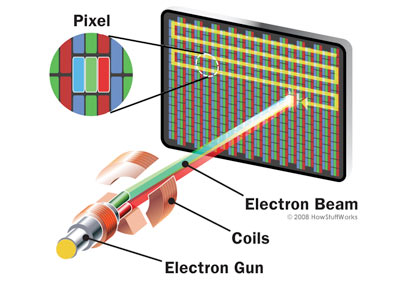

Martin in the 1921 book The electrical transmission of photographs. Winfield Secor in the August 1915 issue of the popular magazine Electrical Experimenter and by Marcus J. His concept for a fully electronic television system was later popularized as the "Campbell-Swinton Electronic Scanning System" by Hugo Gernsback and H.

The photoelectric screen in the proposed transmitting device was a mosaic of isolated rubidium cubes. Campbell-Swinton later expanded on his vision in a presidential address given to the Röntgen Society in November 1911. A cathode ray tube was successfully demonstrated as a displaying device by the German Professor Max Dieckmann in 1906 his experimental results were published by the journal Scientific American in 1909. He noted that the "real difficulties lie in devising an efficient transmitter", and that it was possible that "no photoelectric phenomenon at present known will provide what is required". In June 1908, the scientific journal Nature published a letter in which Alan Archibald Campbell-Swinton, fellow of the Royal Society ( UK), discussed how a fully electronic television system could be realized by using cathode ray tubes (or "Braun" tubes, after their inventor, Karl Braun) as both imaging and display devices. The camera pickup tubes described in this article are also CRTs, but they display no image. These are usually seen as display devices as used in older (i.e., non- flat panel) television receivers and computer displays. Any vacuum tube which operates using a focused beam of electrons, originally called cathode rays, is known as a cathode ray tube (CRT).


 0 kommentar(er)
0 kommentar(er)
